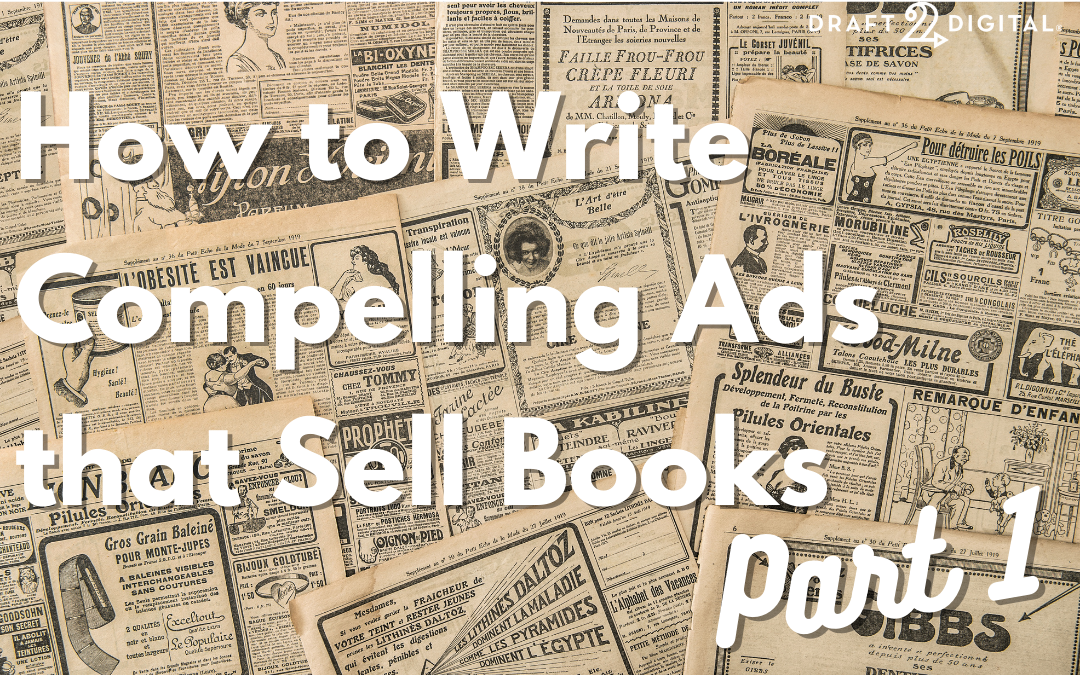Hopefully, you already tune into our Self-Publishing Insiders live broadcasts or catch up after the fact on the podcast version. (If you don’t, sign up here to be in the know!) If you do follow Self-Publishing Insiders, you probably saw that Sam Horn joined us a few weeks back to talk about how to become an intriguing communicator.
Her insights were so applicable to writing indie author ads, blurbs, emails—and basically any other copy that helps sell books—that we decided to write a two-part blog series on applying good communication techniques to indie author marketing.
Without further ado, here’s how to stand out in the crowd and write compelling ads that help your indie-published books reach a wide audience.
Generate intrigue and avoid “infobesity”
We’ve all read an email or an ad with far more words than substance. “Infobesity” is Sam’s term for bloated, boring writing that doesn’t grab the reader’s attention and inspire them to care about what you’re saying.
Can you sell readers a 300-page book in the era of instant information and ever-shortening attention spans? Absolutely—but only if you can grab their attention and communicate in just a few seconds why they should read it. Everyone, from casual readers to high-powered literary agents, makes up their mind in just a few seconds whether they want to read your book or not. So if you’re expecting them to wade patiently through big chunks of content to learn what your book is about, you’re going to be disappointed.
To that end, rehearse your elevator pitch. You should be able to tell someone in 60 seconds or less what your book is about and why they should read it. (If you can get that down to 30 seconds, even better.) Even the longest epic novel can be distilled into a sentence or two. And, of course, make sure your short description is intriguing enough to inspire someone to learn more!
Ask, don’t tell
No one likes to be talked at rather than with, and readers are no exception. Conventional wisdom for speechmaking (and nonfiction writing) runs something like this: tell people what you’re going to tell them, tell them, and then tell them what you told them.
That approach may work great in a lecture hall or within the pages of a book—but when you’re pitching your book to prospective readers, you don’t have that kind of time. Think about all the other authors clamoring for that reader’s attention. You have just a few seconds to hook them and make sure they keep reading.
The goal of each sentence should be to get someone to read the next one. Opening with a question that piques a reader’s curiosity is the perfect strategy to make sure that happens. Sam shared the following example for the opening few seconds of a pitch that she helped a CEO in pharmaceuticals create:
“Did you know there are 1.8 billion vaccinations given every year? Did you know up to a third of them are given with reused needles? Did you know we’re spreading and perpetuating the very diseases we’re trying to prevent? Imagine if there were a painless one-use needle for a fraction of the current cost. You don’t have to imagine it. We’re doing it.”
If your audience wrinkles their eyebrows when you dive into the plot of your book, they’re confused—and confusion does not beget sales.
There’s no such thing as a “recipe” for a perfect ad, but here’s a great start. Feel free to play with this format to find what works for you.
Ask
Open with 1-3 intriguing questions.
For nonfiction, research startling statistics about the topic you’re writing about. If you don’t know them, your reader probably doesn’t either.
For fiction, you won’t be answering these questions in your ad—just piquing a reader’s curiosity.
Imagine
The act of imagining pulls people out of their preoccupation with whatever is going on in their lives. They stop mulling over their own worries and start picturing your words in vivid detail, seeing what you see. Instead of getting distracted by the dings and pings of daily life, they’re lit up and preoccupied by you.
Include a spare number of well-placed evocative adjectives to help immerse readers into the world of your story. If all you have is a few lines, a well-placed word or two is all it takes.
Hook
Finally, hook them with benefits. How will their lives be different or better after reading your book? How will the book captivate them?
For fiction, the answer could be as simple as: they’ll love the characters and answer the compelling question you asked in step one.
Nonfiction authors can make this benefit more tangible. What a reader be able to understand and do after reading? How will that benefit them in their daily life?
Reviews or advance reader blurbs fit well here as a follow-up to copy you write. Readers won’t have to imagine what reading your book will do for them, because you’ll show them.
We have tons more tips to share on writing compelling indie author ads, so stay tuned for Part 2 of this series!
